The Atlas allows you to perform two types of searches:
•Searches for addresses and locations.
•Searches for the elements of a layer based on those elements' attribute values. The elements selected are displayed on the map, and you can access their descriptive information.
Searching for an address or location
To perform a search:
1.Click on  Sidebar and then click on the Search tab. The list of searches appears.
Sidebar and then click on the Search tab. The list of searches appears.
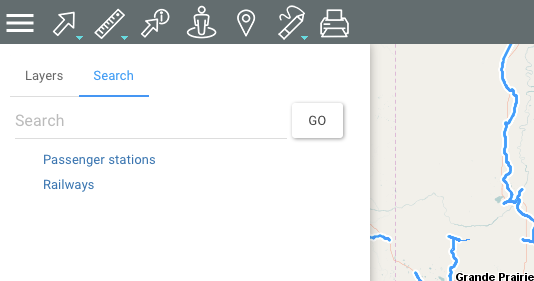
2.Enter the address or location in the Search field. As you type, options will be displayed to guide you.
3.Click on Go. The chosen location is centered in the map interface.
Searching the Atlas layers
To search for layer elements based on the values of their attributes:
1.Click on  Sidebar and then click on the Search tab. The list of searches appears.
Sidebar and then click on the Search tab. The list of searches appears.
2.Click on the name of the search you are interested in. The search form displays.
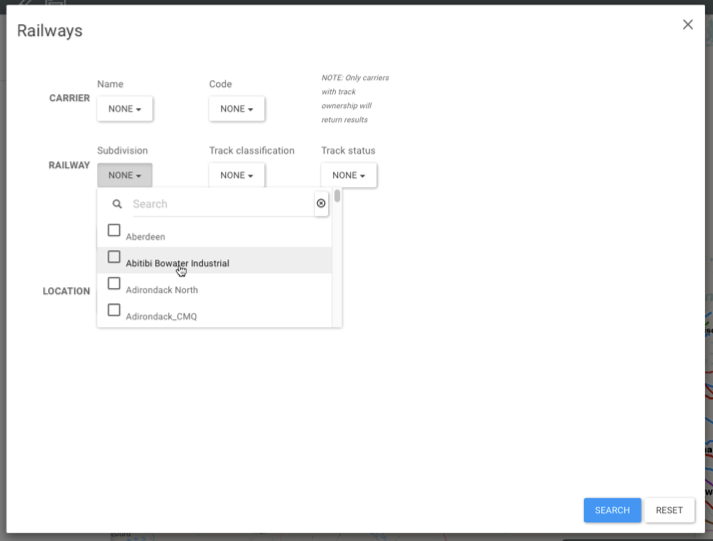
3.Click on the arrow ![]() to display the value menu of each attribute. Select the values you are looking for.
to display the value menu of each attribute. Select the values you are looking for.
You can only select data for a few attributes. For certain attributes, you can select more than one value.
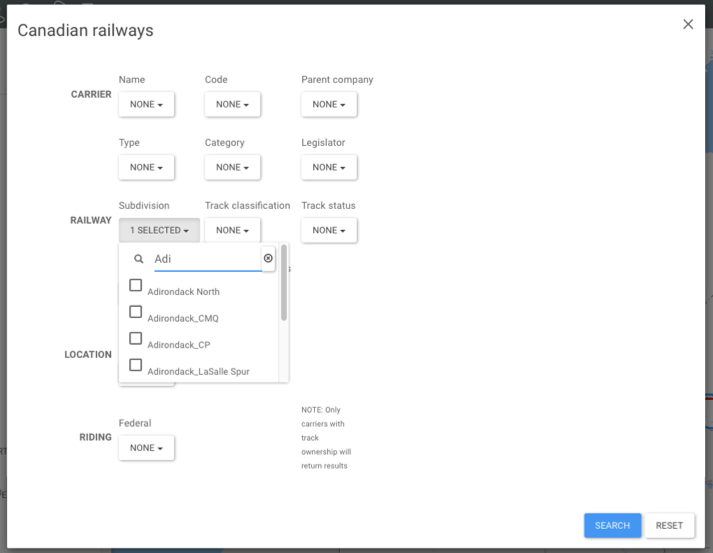
4.Click on Reset if you wish to return to the empty search form and delete the values you selected.
5.Click on Search to display the search results. The elements retrieved are identified with markers in the map interface. The selection explorer displays the attribute data for these elements.
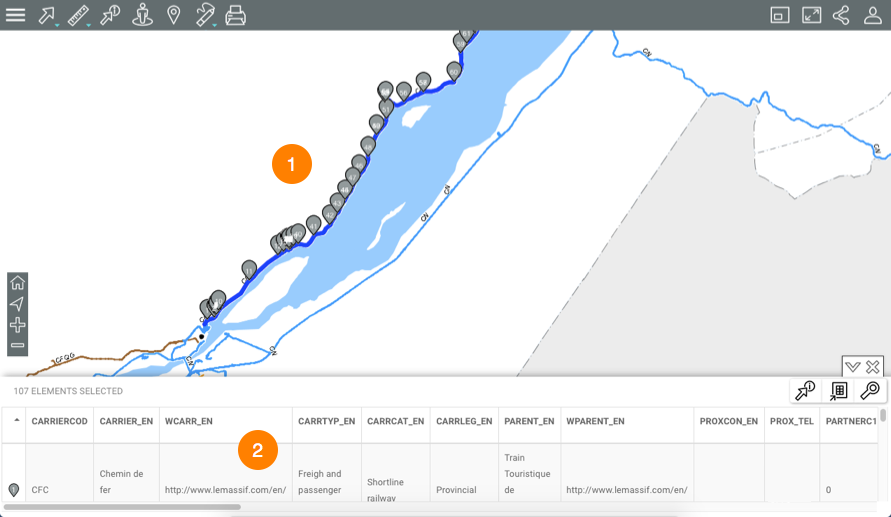
1 |
The elements retrieved are identified with numbered markers |
2 |
The selection explorer displays the elements retrieved in rows and their attributes in columns. Various functions allow you to work with the information in the table. |
6.Click on the  arrow to hide the selection explorer.
arrow to hide the selection explorer.
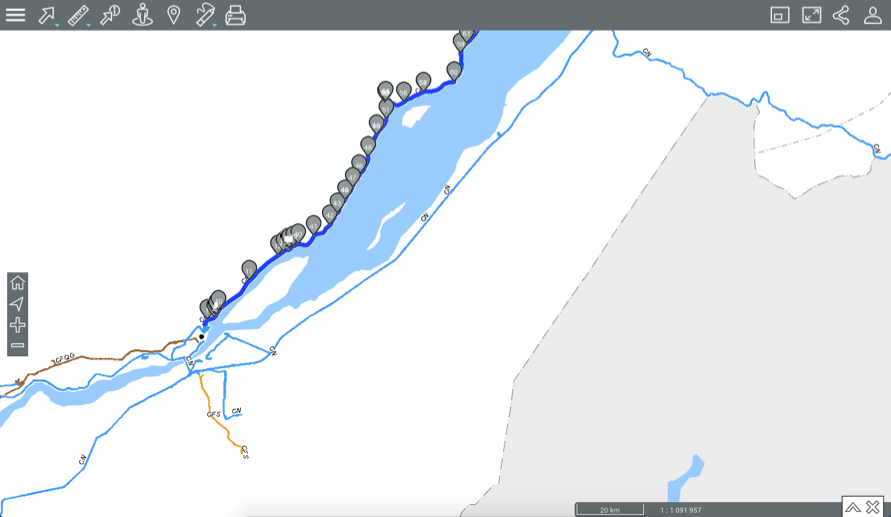
7.Click on the  arrow to redisplay the selection explorer.
arrow to redisplay the selection explorer.
8.Click on  to erase the search results. The selection explorer and the markers are cleared from the map interface. The map interface maintains the same view.
to erase the search results. The selection explorer and the markers are cleared from the map interface. The map interface maintains the same view.
Working with search results
Several tools are available to work with search results.
The selection explorer allows you to view and organize the attribute data of the elements retrieved.

1 |
The first line contains the names of the attributes. You can sort the data in ascending or descending order. |
2 |
The first column contains the number of each element, indicated with a grey marker |
3 |
The vertical bar allows you to scroll through the table and display the elements retrieved. |
Other functions allow you to select elements or to export the data to a file.
Selecting elements
Elements can be selected manually.

1 |
Click on one or more elements in the explorer to select them. The grey marker Keep pressing down on the element to center it in the map. |
2 |
The Zoom to all elements |
Exporting data
You can export the search results to an Excel file.
1.Click on  to export the table to an Excel file. The file will be downloaded to the folder you specify.
to export the table to an Excel file. The file will be downloaded to the folder you specify.
Generating an information report
If the Atlas administrator configured reports for the data layer, you can generate an information report for the elements returned by the search. If no report has been configured for the layer, when you try to generate one, a message indicates that there is no report.
1.Click on  to generate the report for the selection. The interface of the report is as follows:
to generate the report for the selection. The interface of the report is as follows:

1 |
Name of the map layer to which the elements selected in the search belong. |
2 |
Name of the report. |
3 |
The table of attributes. Elements are displayed in rows, and the columns represent the element attributes. The column headers allow you to sort elements in ascending or descending order. |
4 |
This tool allows you to export the report to an Excel file. |
5 |
This tool allows you to print the report. |
 icon displays all elements retrieved by the search.
icon displays all elements retrieved by the search.